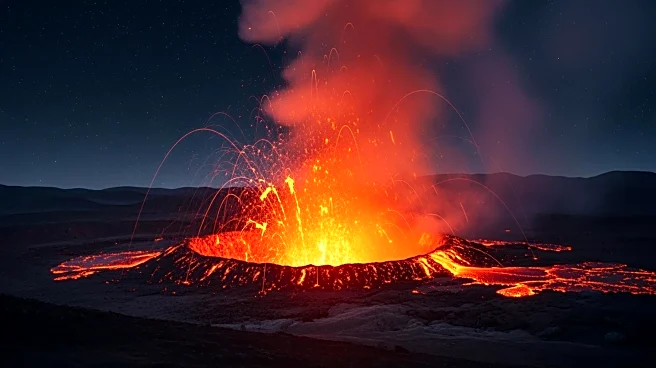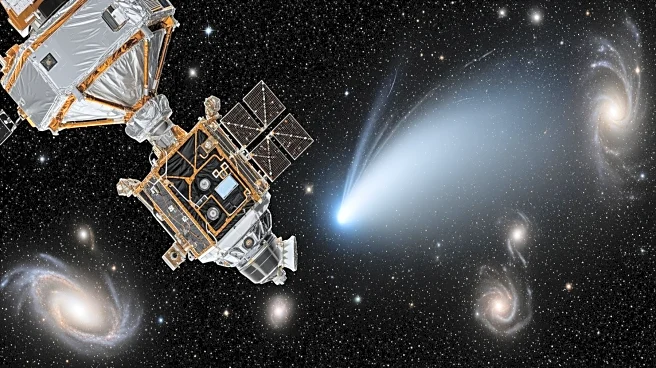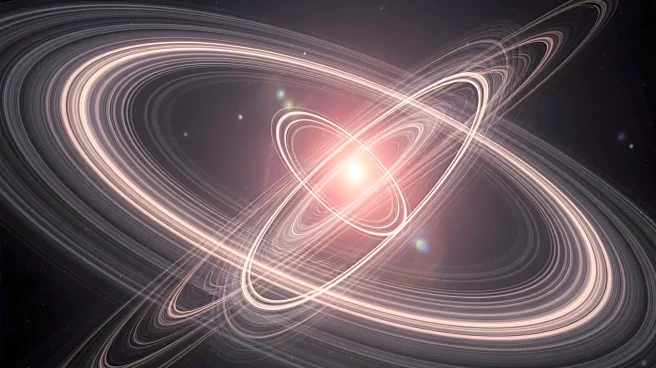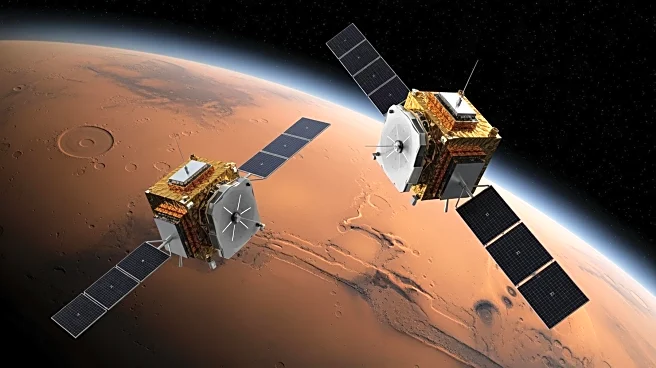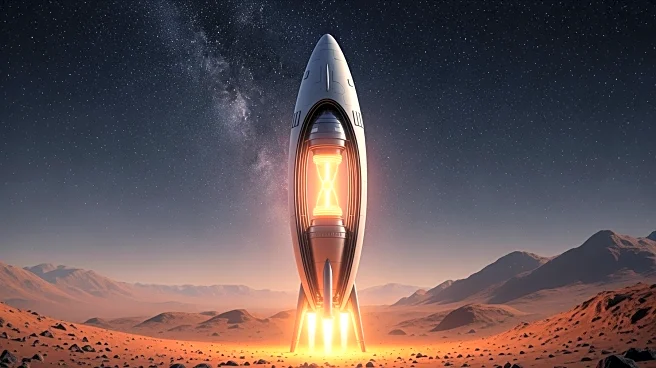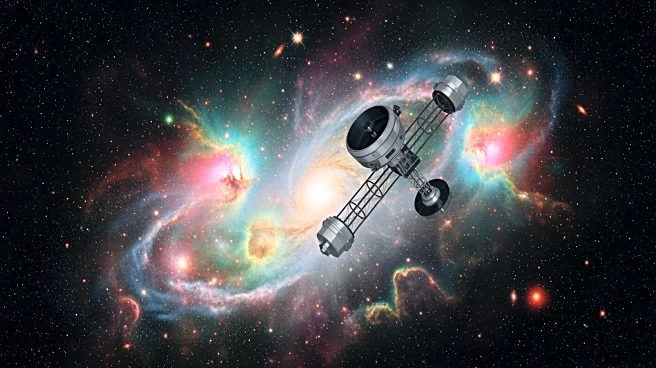What's Happening?
NASA's Juno spacecraft has provided new insights into the volcanic activity of Jupiter's moon Io, revealing that it emits significantly more heat than previously estimated. Io, known as the most volcanically
active body in the solar system, was found to emit hundreds of times more heat from its surface than earlier calculations suggested. This discovery was made by analyzing data from Juno's Jovian InfraRed Auroral Mapper (JIRAM), which showed that the heat emission is concentrated in 17 of Io's 266 known volcanic sources. The findings challenge previous theories about a global magma ocean beneath Io's surface, suggesting instead that the heat is not uniformly distributed but concentrated in specific areas. The research team, led by Federico Tosi from the National Institute for Astrophysics, noted that previous studies focused on a specific infrared band, which may have led to underestimations of Io's heat output.
Why It's Important?
The revelation of Io's higher-than-expected heat emissions has significant implications for our understanding of volcanic processes on other celestial bodies. It challenges existing models of Io's internal structure and the potential presence of a global magma ocean. This could influence future research and exploration missions targeting Io and similar volcanic moons. Understanding Io's volcanism is crucial for comprehending the dynamics of the Jovian system and the role of tidal forces in driving geological activity. The findings also highlight the importance of using comprehensive spectral data to accurately assess planetary heat emissions, which could refine models of planetary formation and evolution.
What's Next?
While the current findings do not conclusively rule out the existence of a global magma ocean beneath Io, they suggest that more detailed observations are needed. Future missions, such as ESA's Juice and NASA's Europa Clipper, will focus on other Jovian moons, limiting their ability to study Io in detail. However, the research team hopes that their findings will guide the design of future missions specifically dedicated to Io, which could provide direct observations of its volcanic processes. Continued monitoring of Io is essential to unravel the mysteries of its intense volcanism and to refine models of its internal structure.
Beyond the Headlines
The study underscores the complexity of interpreting planetary data and the need for caution in drawing conclusions from limited observations. It highlights the challenges of studying distant celestial bodies and the importance of developing advanced instruments capable of capturing comprehensive data. The findings may also prompt a reevaluation of volcanic activity on other moons and planets, potentially leading to new insights into their geological histories and the forces shaping them.


